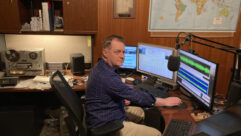Last week the FCC released an Order On Remand (FCC 11-181) regarding National Environmental Policy Act (NEPA) compliance for proposed tower registrations and the effects of communications towers on migratory birds. While the rules require an environmental assessment (EA) for specific new towers or tower modifications, an EA may be required for other towers, including those below 200 feet in height that are not required to be registered if they would have a significant impact on the environment.
Anyone proposing a new tower above 450 feet, with very few exceptions, has to complete and file an EA before filing the Antenna Structure Registration. Replacement towers are allowed without an EA unless it involves “a substantial increase in size” as defined in the new rules. However, modifications to towers over 450 feet that involve a change in lighting from a preferred-to-less-preferred style will require an EA. These exemptions and rules may change when the FCC concludes its programmatic EA and any subsequent programmatic environmental impact statement.
Lighting styles are grouped into three categories. Changes within a category do not require an EA. The categories are, from preferred to least preferred: 1) No lights; 2) FAA lighting styles that do not involve use of red steady lights; 3) FAA lighting styles that do involve the use of red steady lights.
While the new rules will have an impact on any broadcaster planning construction of a new tower above 450 feet, most towers used for microwave relays and even new towers constructed for low-power TV stations are likely to be short enough as to not require an EA unless they are in an environmentally sensitive area. Existing towers over 450 feet do not require an EA unless the lighting is changed to a less preferred method. Depending on the results of the programmatic environmental assessment, it is possible that in the future we may see height limit lowered for excluded towers and preferred lighting requirements (no steady red lights) extended to even shorter towers.
— Doug Lung, TV Technology









